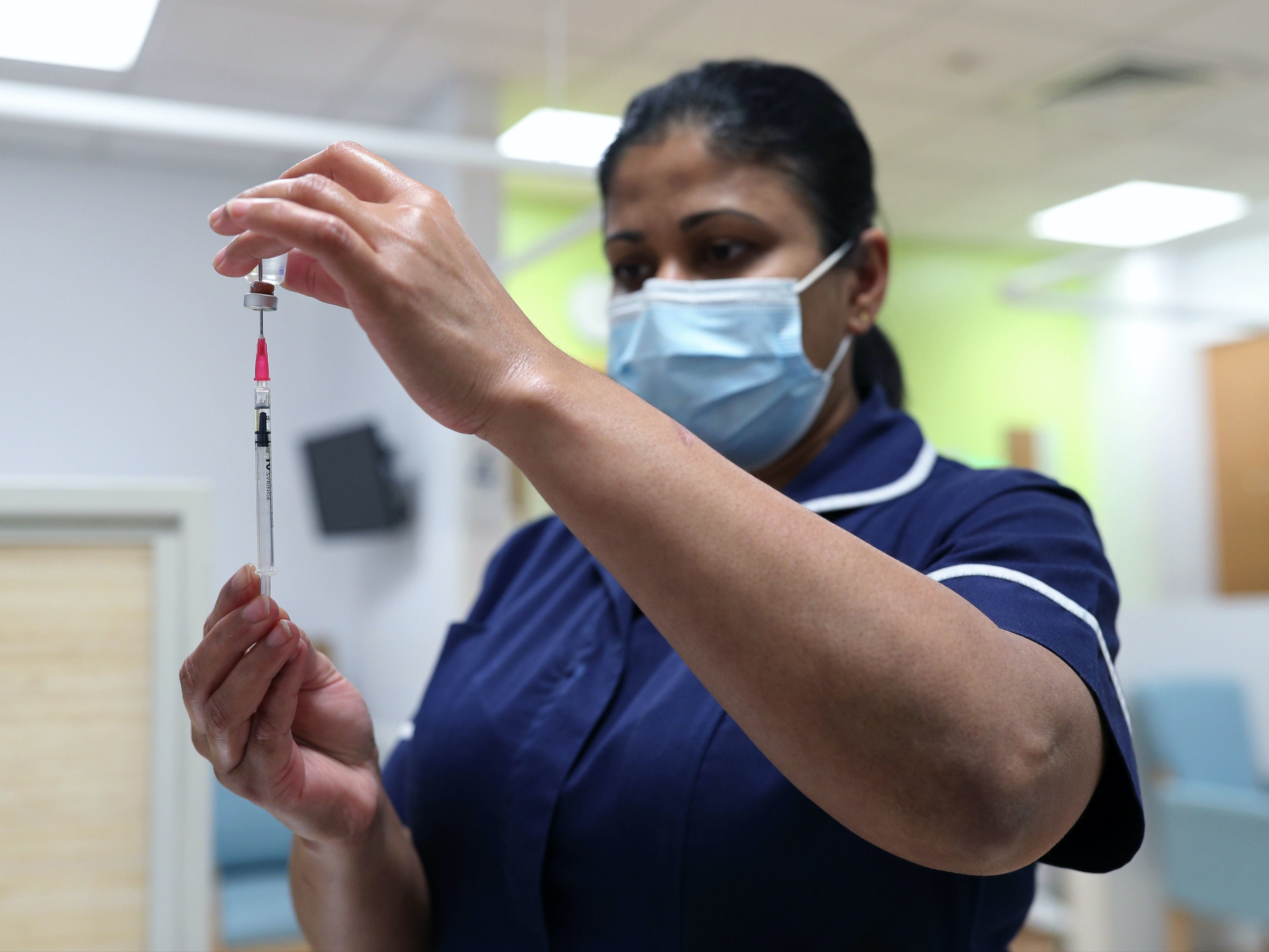
The United States will soon have its first batch of coronavirus vaccines available to distribute to states across the country.
Federal officials previously estimated about 40 million vaccine doses would be available by the end of the year, meaning only 20 million people would receive a vaccination from the first batch because it requires two doses.
But Pfizer, which is seeking emergency authorisation from the Food and Drug Administration (FDA) for its coronavirus vaccine, will only likely have 6.4 million doses available by mid-December, according to a CNN analysis.
The first batch will not likely cover all of the estimated 21 million healthcare workers and support staff in the US, and 3 million residents living in long-term care facilities – the high-priority groups most likely to receive the vaccine first.
Despite the potential shortages in the first batch of vaccine distribution, states will likely follow Centres for Disease Control and Prevention guidance, among others, that recommends for healthcare workers and those in long-term care facilities to be the first to receive the vaccine.
So where are you in line to receive the coronavirus vaccine?
The New York Times created an interactive infographic, using current vaccine guidelines, to show in what order the US population will receive the jab once it becomes available.
First, the infographic, developed using the vaccine tool from the Surgo Foundation and Ariadne Labs, asks people to give their age, county, profession, and if they have any health risks. Then it determines where one might be in line to receive the vaccine.
Healthcare workers and those living in long-term care facilities will likely receive the vaccine first in most states across the country, which follows recommendations put forward by the The Advisory Committee on Immunization Practices.
This is because healthcare workers are on the frontlines taking care of those with the virus, and those in long-term care facilities are most at risk develop life-threatening complications from Covid-19. So if you fall into this category then you will be one of the first to receive the vaccine.
Next will likely involve other first responders, such as police officers and firefighters, who are unable to perform their job role at home. Then the millions of Americans with health risks that could be further exacerbated if they were to contract Covid-19 – such as asthma, diabetes, heart disease, obesity, and other chronic conditions – would follow.
If you do not land in any of these above categories, then you are behind an estimated 118.5 million Americans to receive the vaccine.
Following those with health risks will likely be the rest of the elderly population, other essential workers who are unable to perform their job at home, teachers, the homeless, and those in prisons.
Prisoners should be high on the list to receive the coronavirus vaccine, according to the American Medical Association (AMA), because prisons became Covid-19 hotspots during the pandemic. These hotspots formed for a variety of reasons, including locations being overcrowded with inmates and the facilities utilising shared areas like cells and bathrooms – resulting in the fast spread of the virus once it entered a prison.
The AMA said incarcerated people should “be prioritised in receiving access to safe, effective Covid-19 vaccines in the initial phases of distribution.” But that move, depending on the individual state, could face political backlash.
Young adults could be next in line to receive the coronavirus vaccine behind an estimated 144 million Americans, according to The New York Times, and young children will then follow if the treatment is approved for their age group.
Reasoning behind vaccinating young adults ahead of other groups is because those aged 18 to 30 are more likely to spread the novel virus by displaying little to no symptoms. Also the vaccination would allow for those in school environments to return to a more normal education setting.
The rest of essential workers could follow behind young adults, but it would be essential workers who are able to perform a majority of their tasks from home instead of in a work environment.
Then the rest of the population, which largely involves healthy and younger adults, will be the last in line to receive the vaccine.
Keep in mind, the final order of vaccine distribution has not yet been determined, and it could differ slightly depending on what state you live in. Most states, though, will likely follow the final recommendations put in place by the CDC.
Most Americans will not have the opportunity to receive a coronavirus vaccine until the late spring 2021 or in the summer months, depending on which pharmaceutical companies receive emergency authorisation from the Food and Drug Administration (FDA). The success of manufacturing and distributing the vaccines will also play a part in determining how swiftly the vast majority of the American public will have access to the jab.
 RSS Feed
RSS Feed















 December 8th, 2020
December 8th, 2020  Awake Goy
Awake Goy  Posted in
Posted in  Tags:
Tags: 













